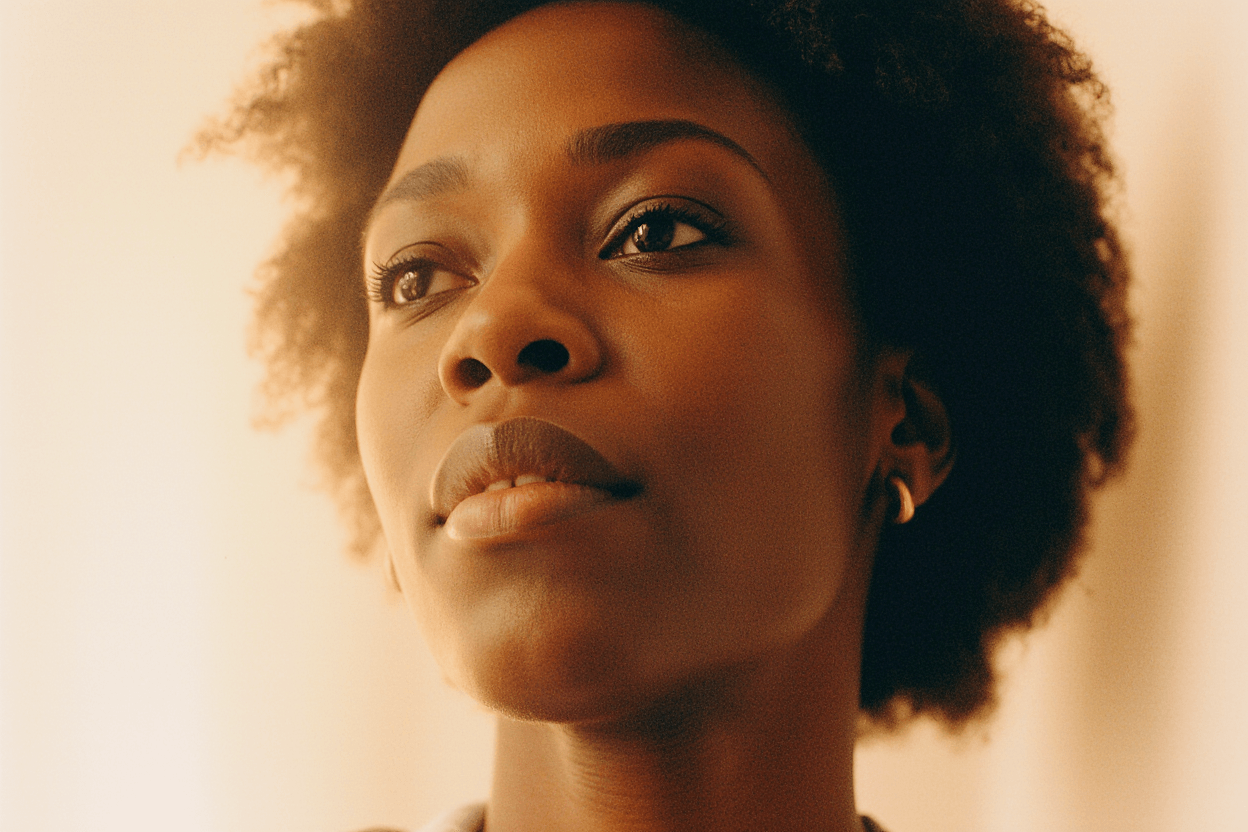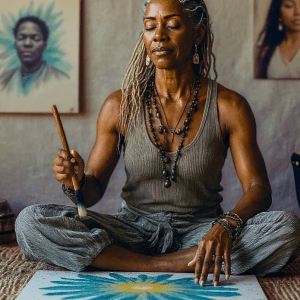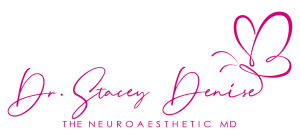You can understand your pain.
You can journal it. Diagnose it. Even name it.
And still—your body will keep flinching.
Because healing doesn’t happen when we “get it.”
It happens when we embody it—when our bodies feel safe, not just our minds.
When Knowledge Isn’t Enough
In Part 1, we explored the invisible injury of emotional trauma.
In Part 2, we remembered that repetition isn’t rigidity—it’s repair.
But here, in this final piece, we go deeper.
Beyond logic. Beyond language.
Because the body feels what the mind tries to explain away.
This is the realm of energy. Of pattern. Of nervous system memory.
It’s why you can read every trauma book and still freeze at a text message.
Why you can understand your attachment style—and still feel unlovable at night.
Why you can “know better” and still repeat patterns that exhaust you.
The Science of Energetic Memory
You don’t just remember with your mind. You remember with your posture. Your breath. Your body’s pacing in a room it doesn’t feel safe in.
Modern neurophysiology affirms what ancestral systems have always whispered:
Emotion doesn’t live in logic. It lives in tissue.
Trauma doesn’t just leave mental residue—it leaves somatic signatures (body memories) that shape how we stand, speak, and connect.
Research shows that traumatic experiences are stored not only in the amygdala (your brain’s alarm system) and hippocampus (your memory library), but also in muscle tension, breath patterns, and posture—protective bracing that lingers long after danger passes (van der Kolk, 2014; Li et al., 2017).
This is why you can know you’re safe—and still flinch.
Why forgiveness doesn’t erase the catch in your breath when you hear their name. Why no affirmation will work if the tone of your nervous system hasn’t shifted.
Heart-Brain Coherence: Breath as Signal, Not Strategy
Studies show that rhythmic breathing paired with emotion-focused imagery doesn’t just soothe the mind—it synchronizes the heart and brain into a state called “coherence.” Think of it as a duet between your heartbeat and your thoughts.
The HeartMath Institute found this practice improves emotional regulation by 27% in trauma survivors compared to basic breathwork (McCraty et al., 2023). It’s not about “calming down”—it’s about creating an inner rhythm your body can finally trust.
Polyvagal Foundations: Rhythm as Repair
According to Dr. Stephen Porges’ Polyvagal Theory, the vagus nerve acts as your body’s safety monitor—constantly listening to your environment for signs of threat or calm.
- Sound (a loved one’s voice vs. a slamming door)
- Movement (dancing vs. freezing)
- Eye contact (soft gaze vs. averted eyes)
- Color (blue-green hues vs. harsh reds)
These aren’t aesthetic extras. They’re sensory lifelines that activate the ventral vagal complex, reducing defense states and inviting connection (Porges, 2011).
Neuroimaging confirms that blue-green wavelengths (like ocean tones) and 40–60 Hz frequencies (the hum of a grounding mantra) stabilize autonomic arousal, restoring communication between emotion and regulation centers (PMC5487409).
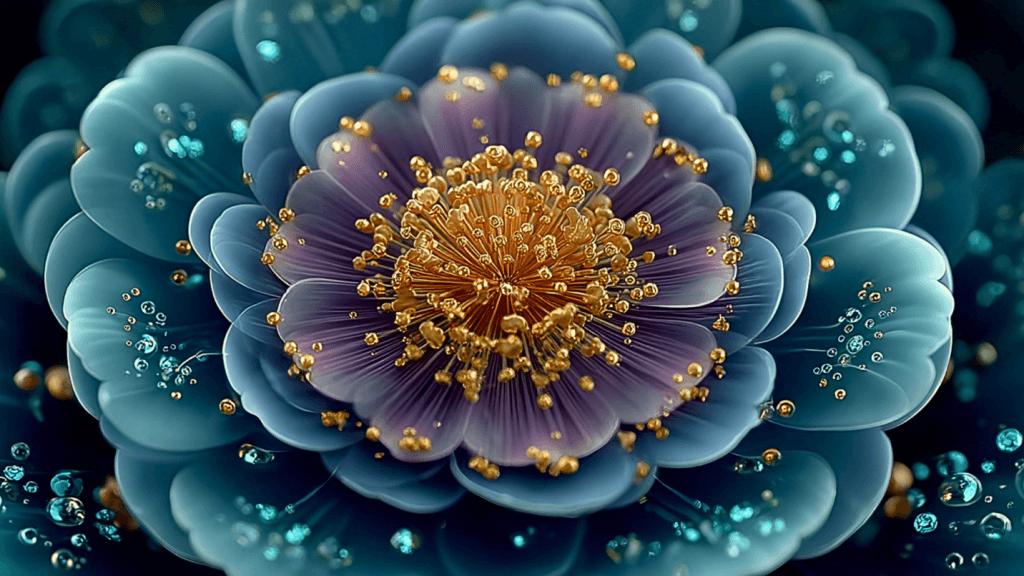
Why This Matters
Your body isn’t resisting healing.
It’s speaking a language older than words.
By designing rituals that honor this dialect—color, rhythm, breath—we don’t just manage symptoms. We rebuild neural pathways that whisper, “You’re safe to stay here now.”
Rituals That Reach the Body When Language Can’t
While words like “energy” are sometimes dismissed in clinical spaces, the measurable impact of symbolic and sensory ritual is becoming clearer every year. When we engage in ritual—lighting sage, drumming together, or painting our stories—we’re not just “doing something nice.” We’re speaking the native language of the nervous system.
While there is strong qualitative evidence that indigenous smudging rituals bring comfort and emotional grounding to participants (Mayo Clinic, 2023; Joseph Brant Hospital, 2025), no clinical studies have quantified cortisol reduction from smudging in humans.
However, other creative rituals, such as art-making, have been shown to reduce cortisol by about 17% in healthy adults (Kaimal, et al., 2016). Cortisol is a hormone your body makes when you’re stressed. HRV is how well your heart can switch between fast and slow beats; higher HRV means your body handles stress better. This suggests that sensory and symbolic rituals, whether through art, movement, or traditional ceremony, can help the body shift out of survival mode, even if the exact biological effects of smudging have yet to be measured.
Group drumming interventions have increased heart rate variability (HRV)—a marker of resilience—by 12–18% in people with PTSD, offering biological proof that synchronized movement repairs disrupted internal rhythms (Fancourt, et al., 2016).
These aren’t metaphors. They’re the body’s way of completing unfinished stories.
They show us what words often fail to explain:
Healing isn’t something you “think through”—it’s something your body has to recognize.
The body doesn’t speak English. It speaks tone, frequency, and symbol.
When we design rituals that speak that language, we don’t just calm the mind—we restore the memory of safety itself.
Your Body Is Speaking in Symbol, Not Sentence
Many of the women I work with don’t have easy access to emotional language—not because they’re cold or resistant, but because words were never safe in the environments they grew up in.
So their bodies speak in energy:
- A sudden tight jaw during praise
- A frozen posture during intimacy
- A collapse into sleep after small rejections
These aren’t quirks. They’re encoded emotional truths. And the way back isn’t logic. It’s ritual, symbol, and rhythm.
That’s why, in the Life Story Arc Program, we don’t just talk about healing. We create visual legacies—using art, color, and portraiture—that become anchors for the body to recognize safety again.
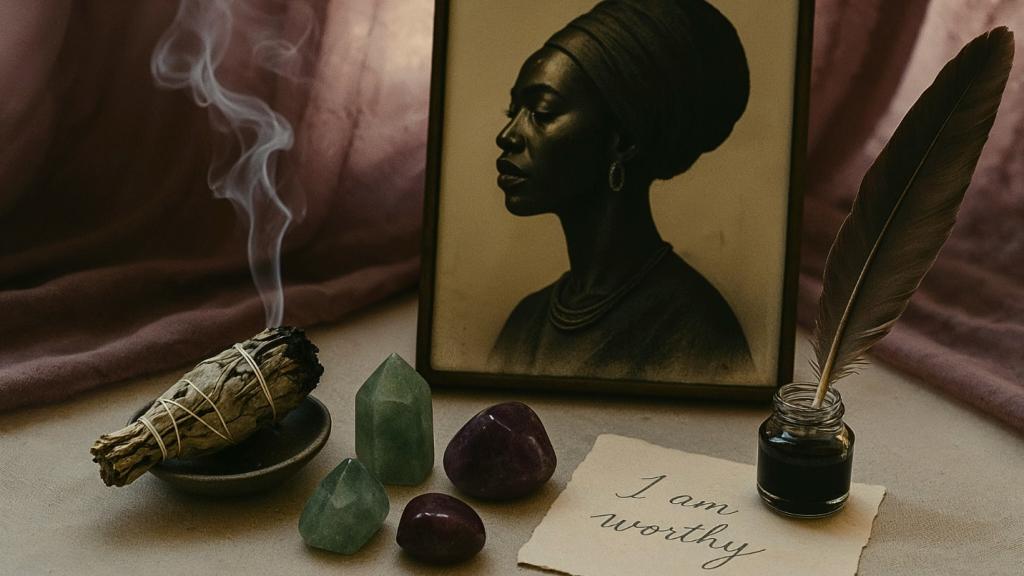
Why Figurative Portraiture and Art Therapy Heal
Art therapy—especially when it involves figurative portraiture—activates brain networks that help integrate traumatic memories, regulate emotion, and build new neural pathways for resilience (Kaimal, et al., 2025; Cucca, et al., 2024). Neural pathways are like the “roads” your brain uses to send messages. Making art helps your brain build new, healthier roads.
Creating or viewing portraits can help externalize the “healed self,” making recovery visible and believable to the nervous system.
Research shows that art therapy:
- Engages the default mode network (the brain’s “storytelling center”) and the salience network (which helps you notice what matters), supporting emotional processing and self-reflection (Kaimal, et al., 2025; Cucca, et al., 2024).
- Helps people with trauma move from avoidance to gentle exposure, supporting integration and meaning-making (Haeyen, et al., 2021).
- Increases cognitive flexibility and neuroplasticity—the brain’s ability to adapt and heal (Kane, 2015; Language for Life, 2024).
Completion Requires Ceremony
Trauma isn’t always what happened. Sometimes, it’s what never got witnessed, processed, or ritualized.
That’s why grief lingers for decades.
Why anxiety spikes on birthdays or anniversaries, even when you don’t “remember” what happened.
Because the body keeps a symbolic calendar—and rituals are how we interrupt the loop.
Completion comes when:
- A candle is lit to end a cycle
- A painting closes a chapter
- A new image replaces the old story in your nervous system
Ceremony isn’t just poetic. It’s neurologically integrative—helping the brain and body finish the story and let go (Lang, et al., 2020).
The Energy of Story: Why I Created the Life Story Arc
As a trauma-informed, sensory-aware physician and certified therapeutic art life coach, I realized that many of my clients didn’t need more diagnostics—they needed energetic representation. They needed to see themselves in symbol.
That’s why my invitation-only Life Story Arc program is a curated extension of the Neuroaesthetic Reset™. Here, high-functioning, sensory-intelligent women can visually and energetically reclaim their story through:
- Archetypes, color maps, and symbolic objects to translate emotional truth into imagery
- Custom portraiture-as-process to externalize the healed self
- Rituals for closure, integration, and forward momentum—without bypassing nuance
Because sometimes, the body needs to see the healing to believe it’s safe to become it.
Closing Reflection
You are not crazy for needing rhythm.
You are not broken for feeling “too much.”
You are not weak for wanting ceremony.
You are a system of energy trying to remember its original frequency.
Let the symbols guide you back.
Let your story become your sanctuary.
Let your healing happen in your body, not just your brain.
Ready to Close One Chapter and Begin a Braver One?
If you’ve walked the path of the Neuroaesthetic Reset™ and feel called to go deeper—into the art, the energy, and the story of your healing—there may be a next chapter waiting for you.
The Life Story Arc is an invitation-only extension of the Neuroaesthetic Reset™.
It’s designed for women who are ready to turn lived experience into symbol, and healing into portraiture.
This is not an open enrollment program; I personally select each participant to ensure the space is safe, intimate, and deeply supportive.
Here, your energy is seen.
Here, your voice is felt.
Here, your story becomes yours again—in color, in ritual, in art.
If you’re interested in being considered for the next Life Story Arc cohort after completing the Neuroaesthetic Reset™.
Art is the Medicine. Design is the Therapy. Healing is the Evolution.
— Dr. Stacey Denise


